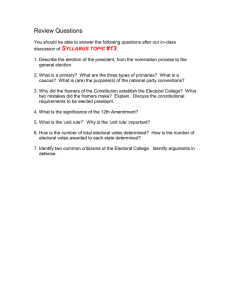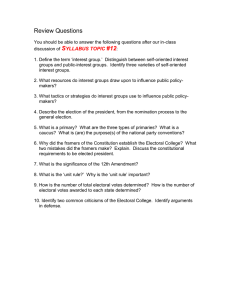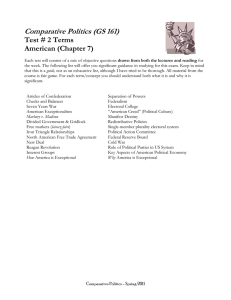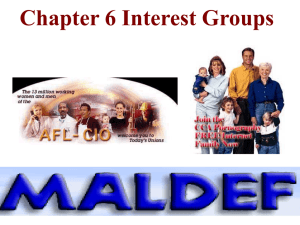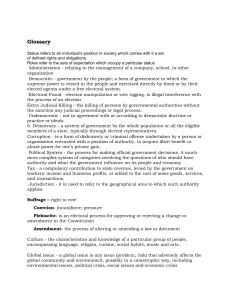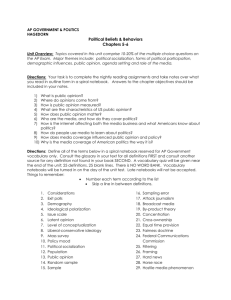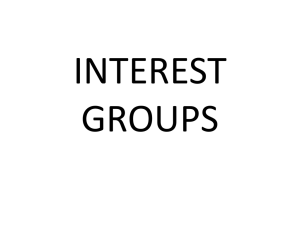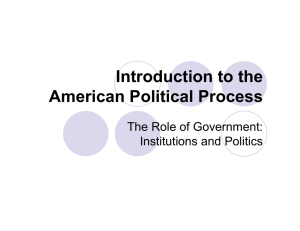AP GOVERNMENT & POLITICS HAGEDORN POLITICAL PARTIES
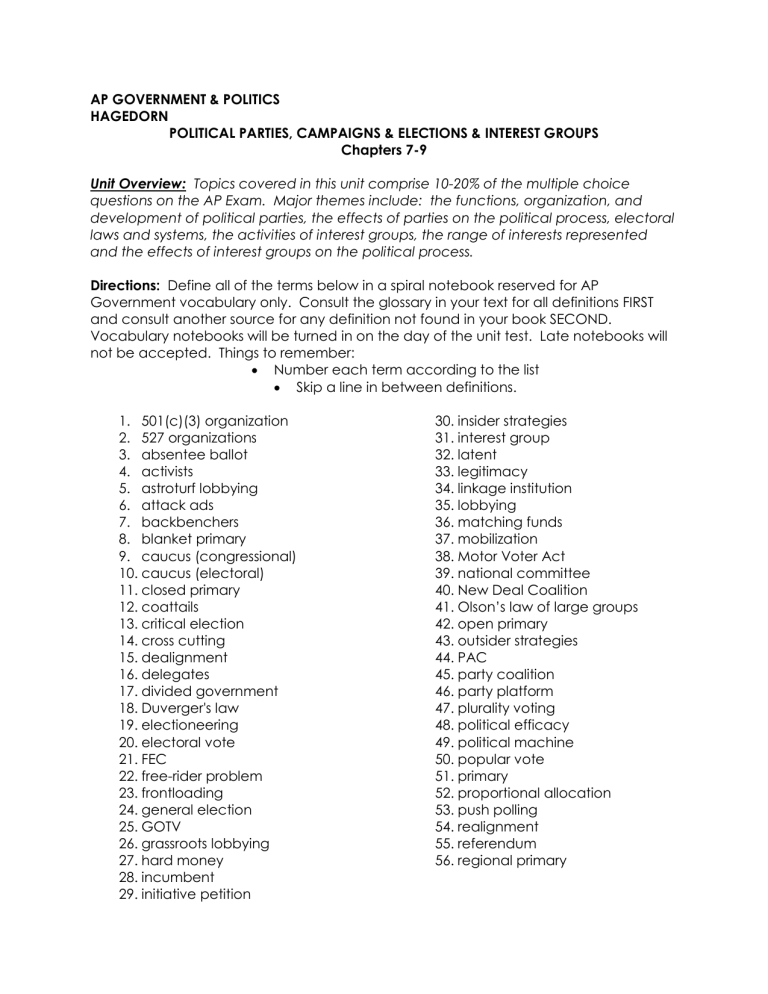
AP GOVERNMENT & POLITICS
HAGEDORN
POLITICAL PARTIES, CAMPAIGNS & ELECTIONS & INTEREST GROUPS
Chapters 7-9
Unit Overview: Topics covered in this unit comprise 10-20% of the multiple choice questions on the AP Exam. Major themes include: the functions, organization, and development of political parties, the effects of parties on the political process, electoral laws and systems, the activities of interest groups, the range of interests represented and the effects of interest groups on the political process.
Directions: Define all of the terms below in a spiral notebook reserved for AP
Government vocabulary only. Consult the glossary in your text for all definitions FIRST and consult another source for any definition not found in your book SECOND.
Vocabulary notebooks will be turned in on the day of the unit test. Late notebooks will not be accepted. Things to remember:
Number each term according to the list
Skip a line in between definitions.
1.
501(c)(3) organization 30.
insider strategies
2.
527 organizations
3.
absentee ballot
4.
activists
5.
astroturf lobbying
6.
attack ads
7.
backbenchers
8.
blanket primary
9.
caucus (congressional)
10.
caucus (electoral)
11.
closed primary
12.
coattails
13.
critical election
14.
cross cutting
15.
dealignment
16.
delegates
17.
divided government
18.
Duverger's law
31.
32.
33.
34.
35.
36.
37.
38.
39.
40.
41.
42.
43.
interest group latent legitimacy linkage institution lobbying matching funds mobilization
Motor Voter Act national committee
New Deal Coalition
Olson’s law of large groups open primary outsider strategies
44.
PAC
45.
party coalition
46.
party platform
47.
plurality voting
19.
electioneering
20.
electoral vote
21.
FEC
22.
free-rider problem
23.
frontloading
24.
general election
25.
GOTV
26.
grassroots lobbying
27.
hard money
28.
incumbent
29.
initiative petition
48.
political efficacy
49.
political machine
50.
popular vote
51.
primary
52.
proportional allocation
53.
push polling
54.
realignment
55.
referendum
56.
regional primary
57.
responsible party model
58.
retail politics
59.
retrospective voting
60.
revolving door
61.
right to work laws
62.
runoff election
63.
salience
70.
spoils system
71.
straight ticket
72.
subgovernment
73.
superdelegate
74.
swing states
75.
taking the late train
76.
undervote
64.
seat shift
65.
single-issue group
66.
single-member districts
67.
soft money
68.
solidary benefits
69.
split ticket
77.
78.
79.
80.
unified government union shop wholesale politics winner-take-all system
READING SCHEDULE
Read and take notes each night over the pages assigned. Label each reading assignment with the appropriate page numbers and sections in the event you are given a pop quiz over a certain section. Keep up with the reading schedule unless I tell you otherwise. This means if you miss a class or there is a snow day, you are still responsible for the reading and note-taking.
Regardless of where we are in our discussion, you must keep up with the reading schedule.
Day
M 9/16
Tonight’s Bianco Reading Assignment Other Assignments
Read “The Problem with
Divided Government”
T 9/17
W 9/18
Th 9/19
F 9/20
Ch. 7 p.219-227 p.228-239 p.239-249 p.249-253
M 9/23
T 9/24
W 9/25
Th 9/26
F 9/27
M 9/30
T 10/1
W 10/2
Th 10/3
F 10/4
M 10/7
Catch-up p.257-271 p.271-280 p.281-290 p.291-304 p.309-323 p.323-336 p.336-343
Vocab Quiz
Unit 3 Test MC
Vocab Due
Unit 3 FRQ


